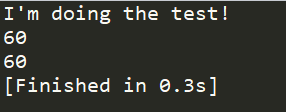python常用语法
@property是一个装饰器,它能够使得类把一个方法变成属性调用的。
class Test:
def __init__(self):
print("I'm doing the test!")
score=60
def getScore(self):
return self.score
@property
def GetScore(self):
print(self.score)
if __name__ == '__main__':
T=Test()
print(T.getScore())
T.GetScore

->常常出现在python函数定义的函数名后面,为函数添加元数据,描述函数的返回类型,从而方便开发人员使用。比如:
def add(x, y) -> int: return x+y
这里面,元数据表明了函数的返回值为int类型。
@property
def attrs(self) -> _Attrs:
pass
- > _Attr则表明函数返回的是一个外部可访问的类的私有变量。
def add(x:int, y:int) -> int:
return x + y
函数注解只存储在函数的 __annotations__ 属性中。例如:
class Test:
def __init__(self):
print("I'm doing the test!")
score=60
def getScore(self):
return self.score
@property
def GetScore(self):
print(self.score)
def Add(self,a:int,b:int):
return a+b;
if __name__ == '__main__':
T=Test()
print(T.getScore())
T.GetScore
print(T.Add.__annotations__)

class Solution:
def twoSum(self, nums: List[int], target: int) -> List[int]:
-> List[int] 表示该函数应返回一个整数列表。
nums: List[int], target: int表示应该nums是整数列表,并且应该target是整数。
使用
return one,two只返回一个元组
python的几种变量——按作用域分
1、全局变量:在模块内、在所有函数外面、在class外面,这就是全局变量。
2、局部变量:在函数内、在class的方法内(未加self修饰的) ,这就是局部变量
3、静态变量(也可以说,类属性):在class内的,但不在class的方法内的,这就是静态变量
4、实例变量(也可以说,实例属性):在class的方法内的,用self修饰的变量,这就是实例变量,该变量要在函数的参数内声明,//可以不必声明
参考:https://www.cnblogs.com/vincent-sh/p/12780716.html








 浙公网安备 33010602011771号
浙公网安备 33010602011771号